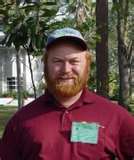Among the new publications of note to arborists is ANSI A300 (part 2) - 2011(Soil Management- a. Modification, b. Fertilization, and c. Drainage). If you fertilize trees, or write specificity regarding the fertilization of trees, this is a new publication you must have in your library. You may obtain a copy of this publication from the Florida Chapter, ISA office.
At first it must be realized that this standard, along with other ANSI standards, is strictly voluntary; however, once it is mentioned in a contract or in a set of specifications which are awarded to a successful bidder the terms become binding and contractual. The argument can be made that if these standards are not a part of specifications they are nonetheless a reasonable starting point which you knew or should have known existed prior to your fertilization efforts. This is an important distinction especially for consultants. The mere fact that this particular standard is not mentioned in a set of specifications does not mean that it should have been omitted, a reasonable professional has a duty to stay current with the latest standards of our industry. You will no doubt find yourself explaining why you did not list a national standard should it be omitted from your specificity regarding fertilization.
This particular standard assumes that the author has a modicum of knowledge regarding fertilizer analysis, ratios, calibration knowledge, and application methodology. Many of us do not have this knowledge. The biggest limiting factor to applying this particular standard is centered on the knowledge of how to read a fertilizer label. For instance, if a fertilizer is required to have a minimum of 50% WIN how does one discover from reading the fertilizer label if that particular product meets the specification? The answer is the value shown on the fourth indented line under the word Nitrogen. Another basic problem which almost always surfaces is how to calculate the square feet located within the Treatment Area. The answer is found in the mathematical formula which we have all heard of 1,000 times, pi r2. Pi is a number typically expressed as 3.1416; however, the ancient Egyptians built the pyramids with pi being 3.0. Due to the fact that most of the pyramids are still standing it may become incumbent upon us to use 3.0 as a factor in calculating the amount of fertilizer needed to apply on 1,000 ft.2. The radius is the length which equals one half the diameter of the tree canopy. Let us assume that a tree needs to be fertilized and this subject tree has a 30 foot canopy radius. Pi (3.0) x the radius (30 feet multiplied by 30 = 900 x 3.0) = 2,700 square feet.
The standard then admonishes that a slow-release fertilizer should be applied at rates between 2 and 4 pounds of actual nitrogen per 1,000 ft.2, per application within a 12 month period. Now that it is known that 2,700 ft.2 is the area which has to be fertilized, the question becomes how does one calculate how many pounds of actual fertilizer must be applied in order to apply 2 to 4 pounds of actual nitrogen? As an example, if a 10-3-15 analysis fertilizer was being used to fertilize the subject tree how many pounds of that particular fertilizer would be necessary to apply to the treatment area in order to apply say, 2 pounds of actual nitrogen per 1,000 ft.2? The answer is to divide the first number listed on the fertilizer label into 100. The answer tells you how many pounds of the 10-3-15 would have to be applied in order to apply 1 pound of actual nitrogen over a 1,000 ft.2 area. The answer in this instance would be 10 pounds (100 / 10 = 10). If you want to apply 2 pounds of actual nitrogen per 1,000 ft.2, than double the factor and the answer would be 20 pounds of the actual fertilizer applied to 1,000 ft.2. As it relates to the example at hand, multiplied 20(pounds of actual fertilizer per 1,000 ft.2) x 2.7(2,700 ft.2) to realize that 54 pounds of fertilizer must be applied onto the treatment area in order to apply 2 pounds of actual nitrogen per 1000 ft.2.
Other questions regarding fertilizer and fertilization would necessarily follow in an assignment. One question would be if you are applying 1 pound of actual nitrogen per 1,000 ft.2, how many pounds of potassium are you applying? The answer of course is to determine the ratio of the fertilizer being used. The ratio of a fertilizer is the mathematical relationship of the analysis. Using the example of the 10-3-15 analysis fertilizer, the ratio would be 3-1-5 (3 divided into 10 = approximately 3, 3 divided into itself equals 1, and 3 divided into 15 =5). Once the ratio of a fertilizer is known it is simple to determine how many pounds, or fractions thereof, are being applied of any one element found in the fertilizer analysis.
Not discussed in this article is how to calibrate the equipment used to apply the fertilizer or a discussion on the time of year to apply certain nutrient derivatives for the best efficacy of the tree or shrub being fertilized. To do so would require the dispensing of cyanide tablets to end one's misery on the preceding paragraph.
Of course the topic of fertilizers and fertilization goes much deeper than the surface just skimmed in this article. It becomes incumbent upon everyone who fertilizers trees or writes specifications for fertilizing trees to understand and realize the tenets found in the new ANSI standard. One way or the other, you will be held accountable for this knowledge in your career. It may be a good decision for you to obtain a copy of this new standard and learn it now rather than wait to defend later.
Joe Samnik, is an Arborist Certified by the International Society of Arboriculture. Mr. Samnik has over 46 years of practice encompassing tree issues, arboreal and horticultural consulting, dispute resolution, tree and plant appraisals and expert witness in tree and landscape issues.
©Copyright - All Rights Reserved
DO NOT REPRODUCE WITHOUT WRITTEN PERMISSION BY AUTHOR.











